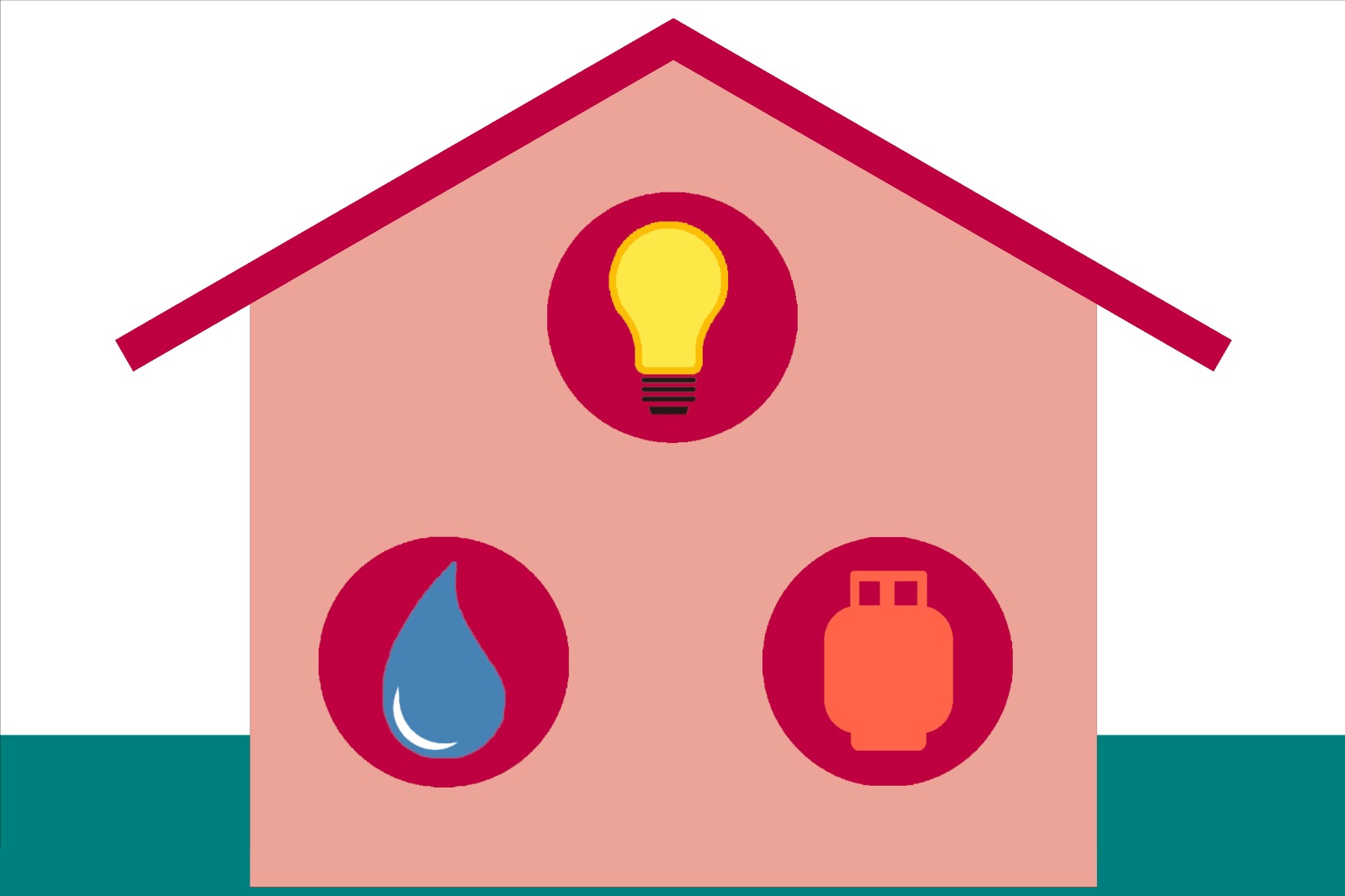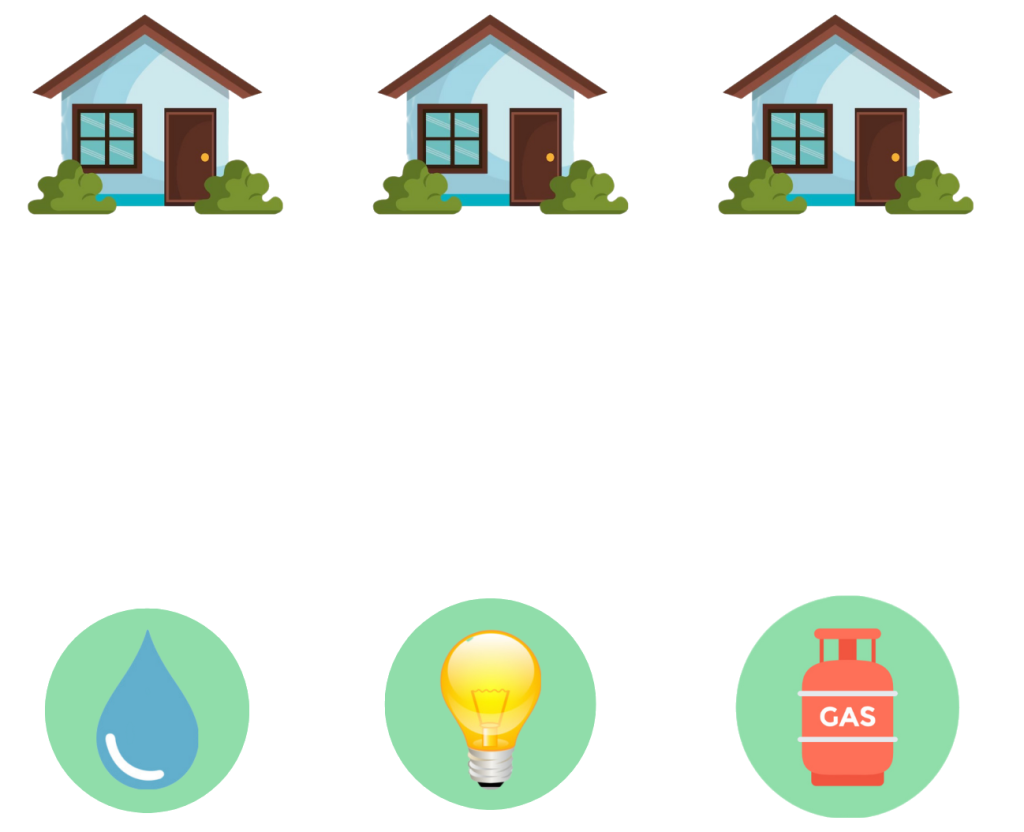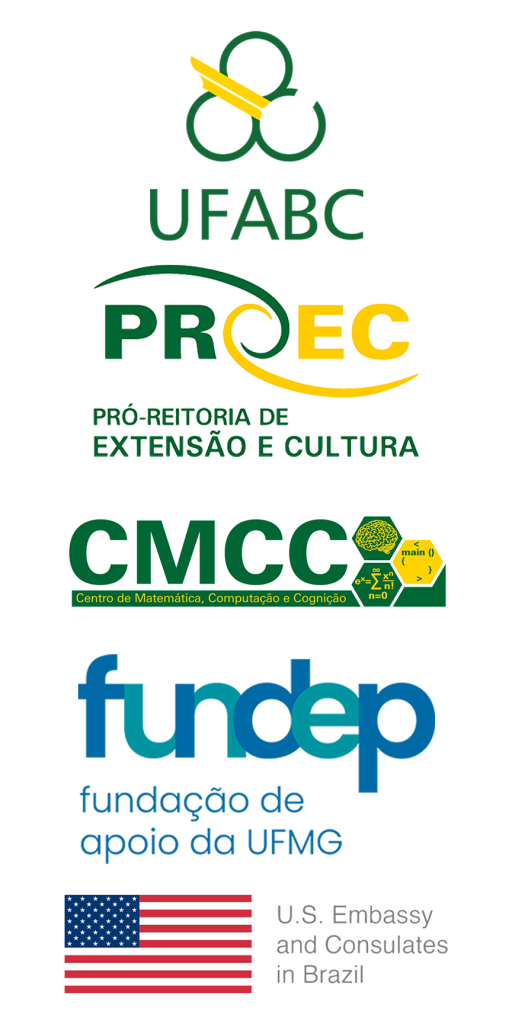
At first glance, the “Water, Light, and Gas” (or “Three Utilities Problem”) seems like a simple puzzle. It’s a challenge that invites us to connect three houses to the water, light, and gas supply centers, all without crossing the lines that represent the connections. However, behind this apparent simplicity lies an intriguing mathematical puzzle that delves into the depths of two fundamental areas of Mathematics: Topology and Graph Theory.
The goal is seemingly clear: the houses need to receive these three vital utilities, but the lines representing these connections cannot cross, creating a challenge that tests not only our spatial intuition but also our ability to think abstractly and logically.

Rules:
- Each house must be connected to the three utility centers (water, light, and gas), and each utility center must be connected to three different houses;
- The lines connecting the houses to the centers cannot cross at any point, ensuring that there are no intersections between them;
- The lines cannot pass directly through the utility centers (the water, light, and gas points). They must go around these centers, but cannot pass through them.
These rules are essential for solving the problem. Solving this puzzle involves the application of mathematical concepts, especially from Topology and Graph Theory, to create connections that meet all the established conditions.
 Na imagem visualizamos o logotipo do projeto 'MatematiZou', escrito com letras de forma na cor verde-azulada. A letra “Z” está na cor branca dentro de um hexágono com pontas arredondadas preenchido na mesma tonalidade de cor do restante das letras.  Na imagem temos um mini caminhão branco de madeira, cuja caçamba é azul escura e está escrito em letras brancas “UFABC”. As rodas do caminhão são vermelhas e quadradas. Cada par de rodas do caminhão está em cima de uma pista com ondulações.  Na imagem, há várias pessoas participando do evento “UFABC para todos” no Ginásio da UFABC campus Santo André. Algumas pessoas estão ao redor de uma mesa com jogos que incluem copos, mapas, tabuleiro de xadrez, entre outros, e outras, estão vendo as exposições espalhadas por todo o ambiente.](https://matematizou.gradmat.ufabc.edu.br/files/LogoMatematizouTeal.png)

